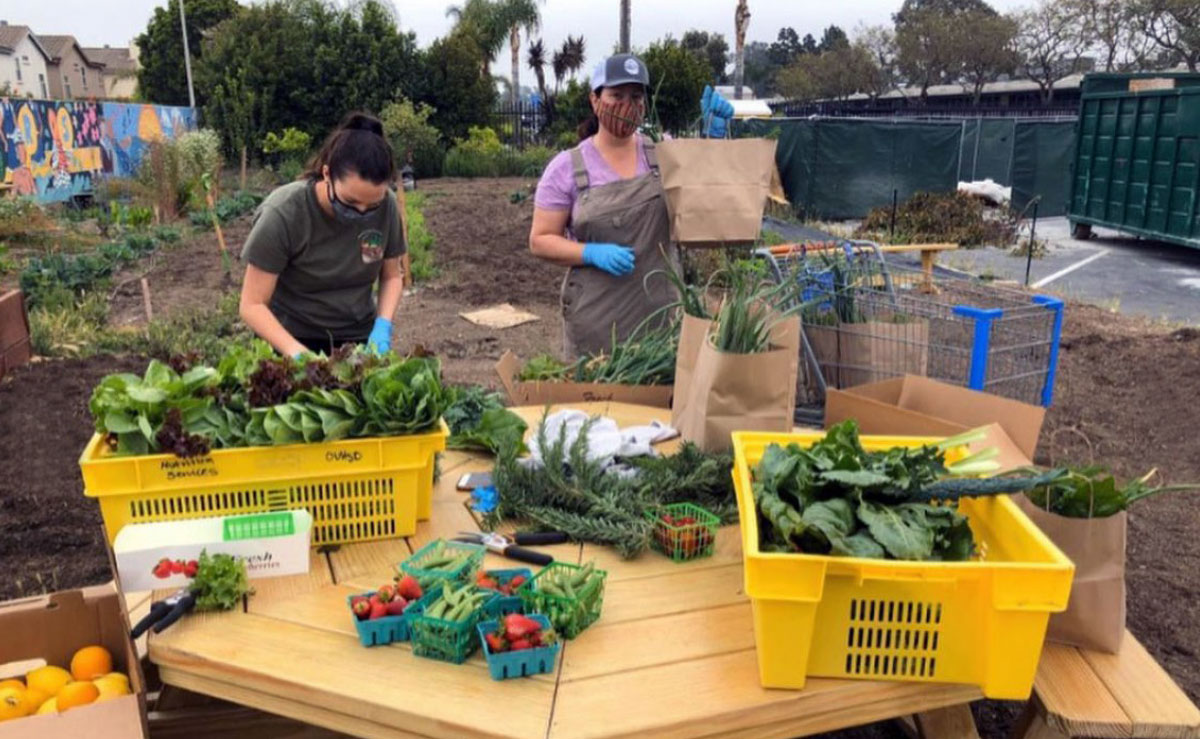class act Best practices in action
Best practices in action

Best practices in action

The program planted roots at the Southern California district in 2016 after roughly a year of planning, according to Farm to School Coordinator Anna Jackson. With a large agricultural population in the area, student voices inspired the formation of the program, which prioritizes nutrition, school gardens, locally grown food and leadership.
“They basically said that they wanted this program and more fresh fruits and vegetables and school gardens, so that put the wheels in motion for us to come in and create the program,” Jackson recalled. “I’m proud of our district and how much it values student input.”
Since then, it has continued to evolve and branch into various subject areas — a key to its success.
“We try to make our lessons embedded into curriculum,” said Ali Villegas, a nutrition educator. “We have nine sites, and we have teachers at every school who work with us.”
Teens have the opportunity to be health leaders on their campuses by being part of Student Nutrition Advisory Councils, which focus on the interests of individual schools. Overall, members take on activities like participating in community service, organizing health fair and wellness events, helping with the gardens and working with cafeterias to give student feedback. Having their opinions heard has been positive for students, Jackson noted.
From the gardens, some crops like lettuce are given to the cafeteria to use but most goes home with students both pre-COVID and during via regular food distribution sessions. It is also used by the schools’ culinary programs and by instructors like Villegas in lessons.
In the community, the program is part of the Ventura County Farm to School Collaborative — a group of districts with similar programs where ideas, resources and curriculum are shared. Oxnard Union HSD also partners with the local public health office and California State University, Channel Islands.
A mix of funding sources, including grants from organizations like the McHugh-O’Donovan Foundation and a California Department of Food and Agriculture specialty crop block grant, have supported the program. The district also contributes Local Control and Accountability Plan funds.
The investments of time and money are paying off, Jackson said.
“We have a diverse district and we’ve seen the program’s impact with so many different types and groups of students,” Jackson said. “We really feel that all types of curriculums can be applied in the garden from math to art to language. There are so many options for learning.”

One of the things Villegas enjoys most is seeing students’ willingness to try foods that they think they don’t like or otherwise may not be exposed to. “I think it gives them a safe space to try some of these foods as well as the mental health component of working in the garden and eating right,” she said.
Lifelong skills like responsibility and commitment are taught through growing food that can then be used to demonstrate how to make a nutritious meal.
“Our district is entirely high schoolers … really encouraging them to take the best care of themselves by drinking enough water and eating food that’s actually fueling their brain and body,” Villegas continued. “To give them that head start is what we try to push.”
Another benefit of time in the garden? Having students disconnect from their devices and connect with each other.
The chance to focus on mental and physical health as well as connect with others is something many students will likely need following months of distance learning. Some students have already been able to return to the gardens with more to follow at the start of the new academic year.